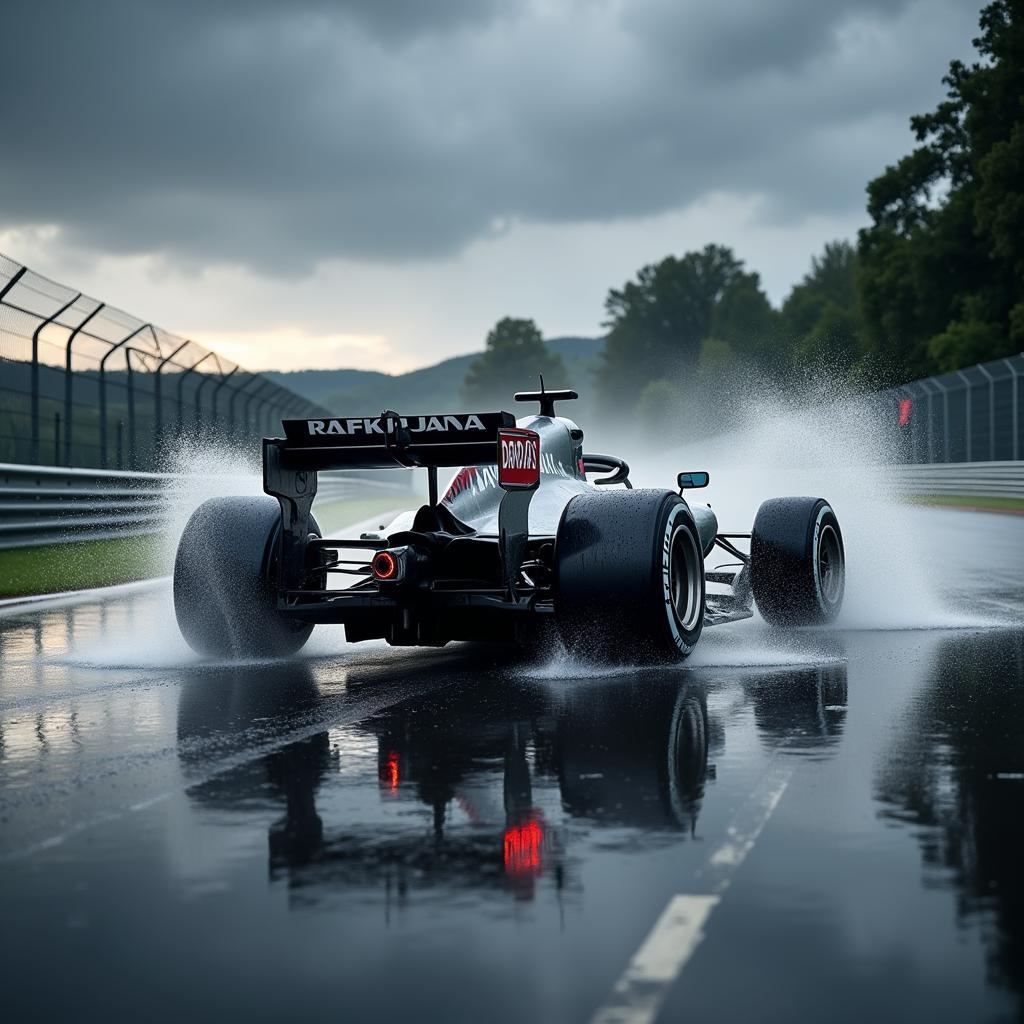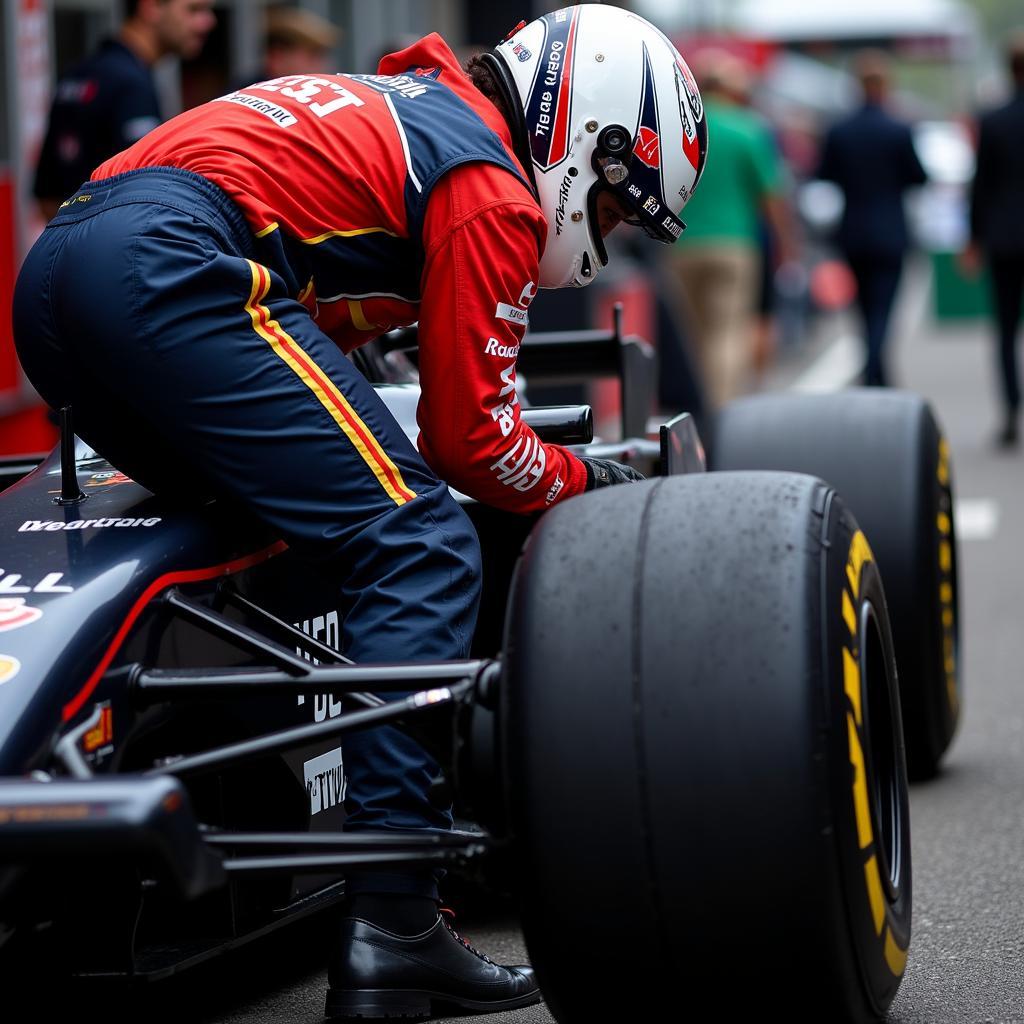Weather in Formula 1 is more than just rain or shine. It’s a crucial factor that can make or break a race, influencing tire choices, strategies, and ultimately, the outcome. From scorching temperatures to sudden downpours, drivers and teams need to adapt quickly to stay ahead of the game.
 Formula 1 car racing through heavy rain
Formula 1 car racing through heavy rain
The Science Behind Weather’s Influence
The aerodynamic grip of an F1 car is significantly affected by wind speed and direction. A tailwind can increase straight-line speed, while a headwind creates drag, reducing pace. Crosswinds, however, pose the biggest challenge, making it tricky to maintain control, especially at high speeds.
 Formula 1 driver inspecting tire wear
Formula 1 driver inspecting tire wear
Air and track temperature also play a crucial role. Hot weather can lead to tire degradation, forcing teams to strategize pit stops and manage tire life effectively. Cooler temperatures, on the other hand, can improve engine performance and grip, but may also increase the risk of tire warm-up issues.
Rain: The Great Equalizer
Rain introduces a whole new level of complexity to F1 racing. The reduced grip levels make it challenging to control the car, leading to exciting overtakes and unpredictable outcomes.
 Formula 1 cars following the safety car in wet conditions
Formula 1 cars following the safety car in wet conditions
Drivers need to adjust their driving style, braking points, and acceleration to maintain control on a wet track. Wet weather tires with deeper grooves are used to disperse water and improve grip, but even with these specialized tires, aquaplaning (losing control due to water between the tire and track) remains a constant threat.
How Teams and Drivers Adapt
Teams closely monitor weather forecasts and use sophisticated software to model different scenarios. This helps them make informed decisions regarding car setup, tire choices, and race strategies. Real-time weather data during the race is crucial for adjusting strategies on the fly.
Drivers rely on their skills and experience to navigate challenging weather conditions. They receive constant updates from their engineers and use their intuition to judge grip levels and adjust their driving accordingly.
Conclusion
Weather is an inseparable part of the F1 experience, adding another layer of excitement and unpredictability to the sport. Its impact on car performance, driver strategy, and race outcomes makes it a fascinating aspect for both hardcore fans and casual viewers. As technology evolves and teams find new ways to adapt, one thing remains certain: weather will continue to be a defining force in the world of Formula 1.





